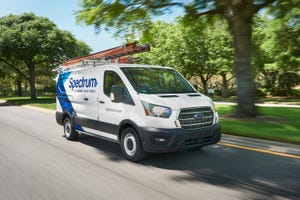Altice FTTH Bill Could Hit Almost $9.6B in US
Cable operator could face a huge bill to achieve its goal of connecting US homes to a high-speed FTTH network over the next six years.

Cable group Altice could be facing a bill of nearly $9.6 billion to connect the premises in its footprint to a fiber-to-the-home (FTTH) network, according to calculations based on data from broadband equipment vendor Adtran.
Altice, which owns the Optimum and Suddenlink Communications cable businesses in the US, this week announced plans to build a FTTH network that can provide 10Gbit/s services to almost all of the homes in its US footprint by the end of 2022. (See Altice Plans FTTH for Entire US Footprint and Altice Favors Fiber Over D3.1 for Its US Upgrade.)
On the basis of homes passed at the end of September, that plan would mean ensuring fiber networks reach almost 7.985 million homes in the next few years -- 5.075 million served by Optimum and 2.91 million in the Suddenlink footprint.
Like other cable companies, Altice relies largely on DOCSIS technology, which runs over hybrid fiber coax (HFC) networks, to provide Internet connectivity for its customers. But the FTTH scheme suggests it doubts the business case for a large-scale deployment of DOCSIS, the next iteration of which is the DOCSIS 3.1 standard.
Optimistically, Altice reckons that by reinvesting "efficiency savings" it will be able to build this FTTH network without any "material change in its overall capital budget."
It is hardly surprising that Altice is keen to play down any concern that investment needs could soar on the FTTH plan. The company toils under a mountain of debt that currently equals about 5.7 times its annual EBITDA. Most big European operators report net-debt-to-EBITDA ratios of between 2 and 3.
Even so, while Altice has developed a reputation as a pretty ruthless cost cutter, its budget expectations seem overly optimistic, judging by cost data that Light Reading has been able to obtain from Adtran Inc. (Nasdaq: ADTN).
The equipment vendor, which specializes in the broadband sector, puts the average current cost of connecting a home to fiber at between $800 and $1,200. This would require Altice to cough up between $6.4 billion and $9.6 billion to cover all of the homes it currently passes with HFC.
The actual figure could, of course, be somewhat lower because of investments that have already been made: It is important to note that Adtran was not commenting specifically on the Altice plans.
On the other hand, Altice has said it will make use of "proprietary technologies" developed by Altice Labs, its own in-house R&D unit, which would seem to rule out next-generation FTTH standards such as XGS-PON and NG-PON2: Using in-house developed technology could alter the capital and operating costs.
The rollout of gigabit broadband access networks is spreading. Find out what's happening where in our dedicated Gigabit Cities content channel here on Light Reading.
To put these figures in context, Altice spent a total of €197.8 million ($210.2 million) on capital expenditure in the US during the July-to-September quarter -- about 9.8% of what its US subsidiaries made in sales.
Annualized, and ignoring any seasonal variation, that comes out at €791.2 million ($840.9 million). Assuming Altice's FTTH investment takes place over a six-year period (from early 2017 until late 2022), the bottom end of Adtran's range would require the operator to spend $1.07 billion annually on broadband rollout.
Even if Altice were to connect only existing customers, rather than homes passed, it could face a bill of between $3.6 billion and $5.5 billion -- or between $600 million and $917 million a year. Optimum had 3.107 million HFC customers on its books at the end of September, while Suddenlink catered to 1.454 million.
Finding savings may not be that easy. While Altice does not break out details of costs, Suddenlink could already be considered the most profitable business that Altice owns, reporting an EBITDA margin of 46.4% in the July-to-September quarter. Optimum, conversely, was the least profitable, with an EBITDA margin of 35.8%. And so-called "synergies" between the two US businesses could offer scope for additional savings.
What's clear is that FTTH will cost a lot more than an upgrade to DOCSIS 3.1 that would include some fiber rollout. Adtran reckons the cost of this kind of deployment currently ranges from about $400 to $500 per home. That would require Altice to fork out between $3.2 billion and $4 billion to upgrade all homes passed.
There are ways of lowering the FTTH bill, however. According to Adtran, several operators are now looking at technologies that could reduce fiber-trenching costs, leaving service providers with an FTTH bill of between $600 and $1,000 per home passed.
Another approach, it says, is to roll out DOCSIS 3.1 today and plan for a fiber upgrade in the next seven to ten years, on the assumption that very high-speed technologies are not urgently required.
The problem here, says the vendor, is that an operator would end up spending more than if it took the fiber plunge today. In the long run, Altice's decision may look like a shrewd one.
— Iain Morris, 

 , News Editor, Light Reading
, News Editor, Light Reading
Read more about:
EuropeAbout the Author(s)
You May Also Like




_International_Software_Products.jpeg?width=300&auto=webp&quality=80&disable=upscale)







